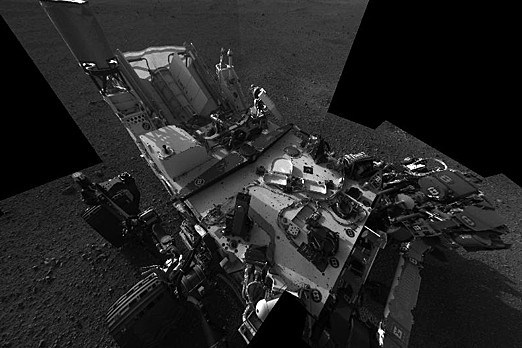THUNDER BAY – The space industry has had a tough go of things in the past decade but that hasn’t kept Randy McAllister from continuing to crane his neck and tilt his head toward the stars.
McAllister has studied those stars for the past 20 years and as the president of the Thunder Bay Observatory for the past 10 years he’s been helping people take a gander. But no matter how much he has looked and studied, he says he hasn’t turned the first page of the 1,000 page book that is astronomy.
He adds that it’s the vast unknown that keeps him close to his telescope.
“I think that’s the number one thing,” McAllister says. “There’s so much we don’t know. Time and time again there are examples of us thinking we’re pretty knowledgeable and we start looking deeper and we find more and more.
“It’s a lifetime commitment and you’ll never get the job done.”
A few years ago, scientists found an asteroid in the arctic that made its way from Mars. That led to the discovery of microorganisms and prompted the search to see if the red planet could have sustained life.
To get a better sense of Martian life, NASA sent a rover to the red planet and dubbed it Curiosity. The rover was launched from Cape Canaveral on Nov. 26 last year onboard the MSL spacecraft and landed safely on Aeolis Palus in Gale Crater on Aug. 6.
It’s one of the more ambitious space exploration missions taking place at the moment despite cutbacks to space organizations.
The Canadian government recently made cuts to its space program in order to balance the budget. But Canadians aren’t necessarily taking a backseat to the Mars rover mission as some home-grown scientists will be driving the robot during its mission.
McAllister says people’s priorities have switch to more immediate concerns such as health care and taxes, so it’s understandable that the space program goes on the backburners for the public.
“Are we as mankind really benefiting from all this? My general thought is of course,” he says.
The space program has helped pioneer modern technology from propulsion to telecommunication and computers, he argued.
The power used to keep the space traveling Curiosity rover going is less than a personal computer a normal Earthling uses. And it’s not just staying still. The robot from Earth is checking out the Martian landscape, analyzing samples, drilling, snapping photos and much more.
“Look at all the things it’s performing at 100 watts,” he says. “From that perspective, mankind could benefit from the energy source and the energy efficiency. Beyond that, it’s the largest vehicle to land on another planet besides the lunar landers. This thing is the size of a Volkswagen.”
The one thing the Mars rover will have to keep an eye out for is water, he says. Finding a source or even trace of water could mean life at one point in Mars long history could have existed. That’s why it’s such a critical element to keep watch for, he says.
But whether NASA will find carbon elements, McAllister says he’s still on the fence about it.
Earth inhabits what is commonly known as the “Goldilocks area” where the planet is exactly the right distance from the Sun giving it ample opportunity to produce life. Mars on the other hand is just outside that area meaning the weather changes wildly.
The temperature can vary from 27 Degrees Celsius to -107 Degrees Celsius.
McAllister says he doesn’t think it was any better back when the planets and solar system were fairly new. Millions of years later, the Goldilocks area will shift from Earth to Mars but if that will be the start of life on the red planet, McAllister says he’s not sure.
Although people might not immediately think of the space program, McAllister says he has received lots of calls from residents to take a look into the far reaches of space and take a peek at Mars.
“On a good night you can see quite a bit of detail,” he says. “You can see some of the canals structures, the Polar Regions and what appears like frozen ice but is actually frozen gases.
“Anytime there’s something going on in space, I see an increase in activity on my website and email requests for tours and bookings. When the space shuttle goes up, when there’s a meteor shower, or whatever, it kind of reminds people of their interest on what’s going on in space.”
